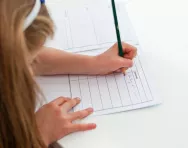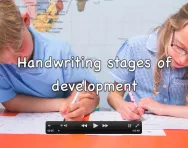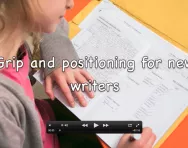Important update from TheSchoolRun
For the past 13 years, TheSchoolRun has been run by a small team of mums working from home, dedicated to providing quality educational resources to primary school parents. Unfortunately, rising supplier costs and falling revenue have made it impossible for us to continue operating, and we’ve had to make the difficult decision to close. The good news: We’ve arranged for another educational provider to take over many of our resources. These will be hosted on a new portal, where the content will be updated and expanded to support your child’s learning.
What this means for subscribers:
- Your subscription is still active, and for now, you can keep using the website as normal — just log in with your usual details to access all our articles and resources*.
- In a few months, all resources will move to the new portal. You’ll continue to have access there until your subscription ends. We’ll send you full details nearer the time.
- As a thank you for your support, we’ll also be sending you 16 primary school eBooks (worth £108.84) to download and keep.
A few changes to be aware of:
- The Learning Journey weekly email has ended, but your child’s plan will still be updated on your dashboard each Monday. Just log in to see the recommended worksheets.
- The 11+ weekly emails have now ended. We sent you all the remaining emails in the series at the end of March — please check your inbox (and spam folder) if you haven’t seen them. You can also follow the full programme here: 11+ Learning Journey.
If you have any questions, please contact us at [email protected]. Thank you for being part of our journey it’s been a privilege to support your family’s learning.
*If you need to reset your password, it will still work as usual. Please check your spam folder if the reset email doesn’t appear in your inbox.
How handwriting helps your child’s learning

In this digital age, handwriting seems less important than ever. As adults, many of us rarely put pen to paper, and even children spend much of their classroom time using computers and tablets.


Improve handwriting in 10 minutes a day
- Step-by-step handwriting guide
- Over 200 worksheets
- From patterning to cursive
But, says handwriting specialist Lee Dein, creator of the Magic Link handwriting programme, ‘handwriting is an essential skill for both children and adults.’ And it’s not just useful for penning thank-you letters to ageing relatives, it also has a valuable impact on learning.
Boosting brain activity
Learning to write by hand has a positive effect on your child’s brain function and development. ‘It activates the brain more than typing, because it involves more complex motor and cognitive skills,’ says Lee. In one recent study, it was found that young children who practised writing letters by hand showed more advanced and adult-like brain activity than those who simply looked at the letters.
Another research project showed that the sequence of strokes used in forming letters by hand boosts brain function. Unlike selecting a letter on a keyboard, handwriting activates areas of the brain involved in working memory (the system used for short-term storage and recall), thinking and language, giving children’s brains a more intensive workout.
Handwriting and reading
Reading and writing go hand in hand in the early years, and handwriting helps children become more fluent readers. One of the most important concepts involved in reading is understanding that the marks on the page have a meaning. Handwriting helps with this as it encourages children to make the connection between the thoughts in their heads and the words they put onto paper. Even if those words are initially spelled incorrectly or the letters are not properly formed, children can often read back what they have written.
Learning to write by hand also helps children cement their knowledge of the shape and formation of letters, so that recognising them in print becomes more fluent and natural. In addition, over time, handwriting helps children learn to spell, punctuate and think about grammar and sentence construction – all important parts of mastering reading.
Kickstarting creativity
It’s often assumed that, compared to typing, handwriting is a pretty inefficient way of communicating ideas. ‘But actually, children who have mastered handwriting are better, more creative writers,’ says Lee. Research confirms this: a study from the University of Washington showed that primary-age children wrote more and faster, and expressed more ideas, when they produced written work by hand rather than using a keyboard. ‘If children can write comfortably, quickly and with little effort, they can devote their attention to the higher level aspects of writing composition and content,’ Lee agrees.
Handwriting also pushes children to test the limits of their creativity, especially when they’re first learning to write. Whereas phonics programmes and reading schemes introduce letters and words in a regimented, sequential and gradual way, learning to write has no such boundaries. Children can attempt to write whatever they want to write, and even if their spellings are well off the mark – ‘kek’ for ‘cake,’ for instance – they naturally extend themselves through wanting to communicate their ideas.
Academic benefits
It might sound obvious that handwriting can help children with their English skills, but it’s also important across the whole curriculum. Almost every subject involves writing, and children who can handwrite competently are likely to find school easier as a whole. ‘If their handwriting isn’t fast and legible, students miss out on learning opportunities and may underachieve,’ explains Lee. ‘It’s also crucial for note-taking, which is essential for pupils of all ages, because it improves their attention and comprehension – and of course, children must be able to read their own notes, otherwise they’re worthless.’
Handwriting can even have an impact on children’s self-esteem. ‘Children who have difficulty with handwriting might avoid writing, or produce poor written work,’ Lee says. ‘They will find it hard to proof-read their own work and fail to spot their mistakes, which can knock their confidence.’
Finally, it’s important to remember that in primary schools, formal exams like SATs and other tests – from weekly spelling tests to end-of-year exams – are completed by hand rather than on the computer. ‘This is another reason why good handwriting matters, as the examiner needs to be able to read what has been written, otherwise pupils will achieve lower marks, even if the content is good,’ says Lee.
If you’re concerned about your child’s handwriting, or just want to build their speed, legibility and fluency, look through the advice and information on TheSchoolRun's Handwriting hub and check out our handwriting worksheets to help them practise – and boost their achievements across the board.









